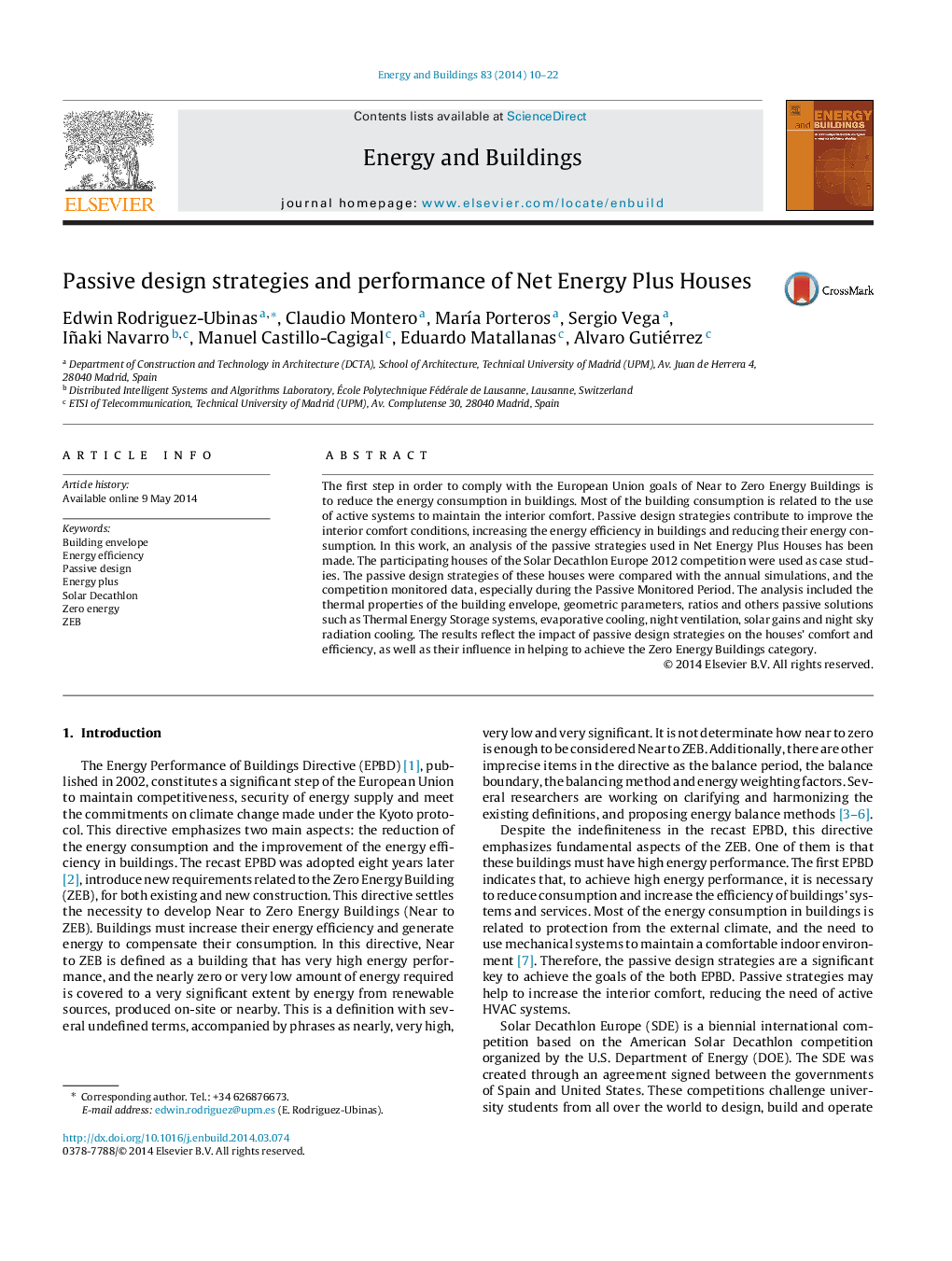| Article ID | Journal | Published Year | Pages | File Type |
|---|---|---|---|---|
| 262725 | Energy and Buildings | 2014 | 13 Pages |
•To comply EU goals of Near to ZEB is necessary to reduce energy consumption.•Solar Decathlon competition houses have been selected as case studies.•Analysis included envelope, geometric, ratios and other passive solutions.•In all cases the passive design help them to achieve the ZEB category.
The first step in order to comply with the European Union goals of Near to Zero Energy Buildings is to reduce the energy consumption in buildings. Most of the building consumption is related to the use of active systems to maintain the interior comfort. Passive design strategies contribute to improve the interior comfort conditions, increasing the energy efficiency in buildings and reducing their energy consumption. In this work, an analysis of the passive strategies used in Net Energy Plus Houses has been made. The participating houses of the Solar Decathlon Europe 2012 competition were used as case studies. The passive design strategies of these houses were compared with the annual simulations, and the competition monitored data, especially during the Passive Monitored Period. The analysis included the thermal properties of the building envelope, geometric parameters, ratios and others passive solutions such as Thermal Energy Storage systems, evaporative cooling, night ventilation, solar gains and night sky radiation cooling. The results reflect the impact of passive design strategies on the houses’ comfort and efficiency, as well as their influence in helping to achieve the Zero Energy Buildings category.
